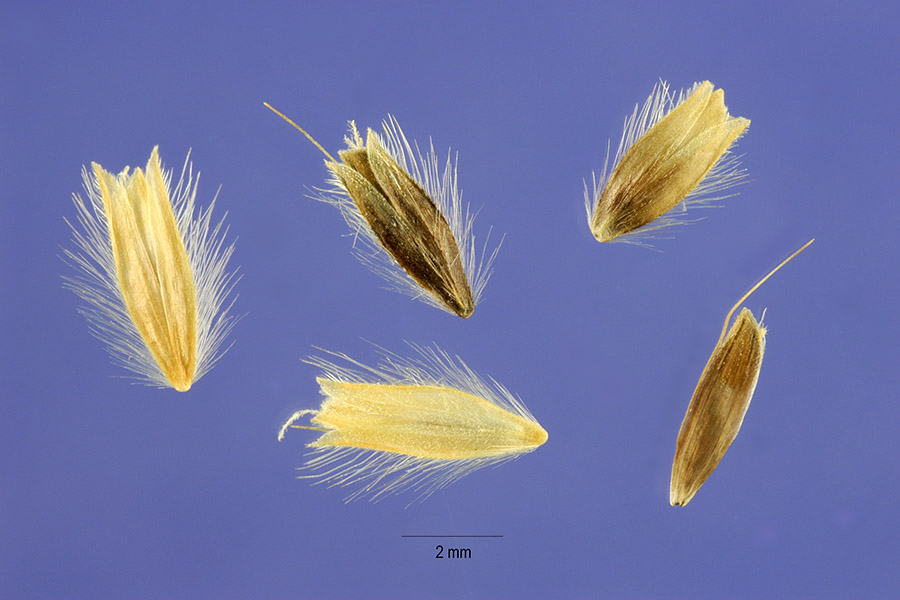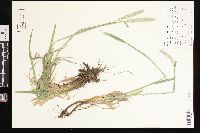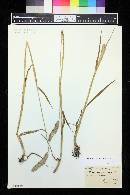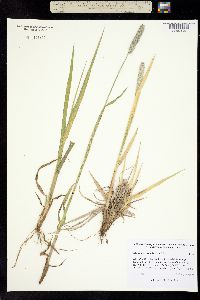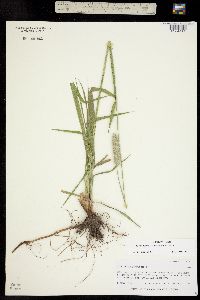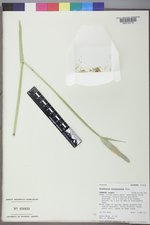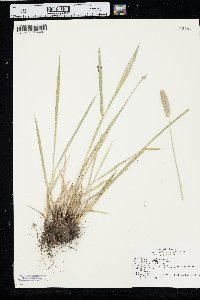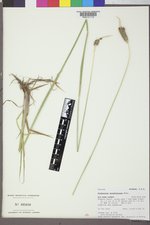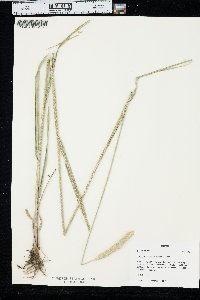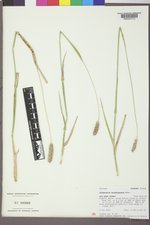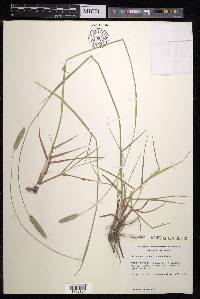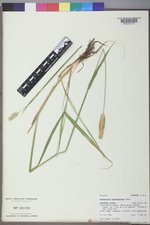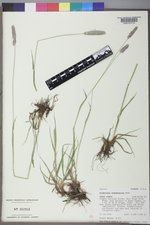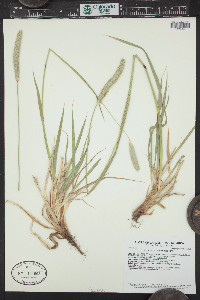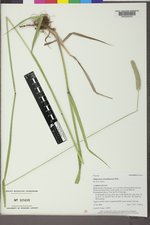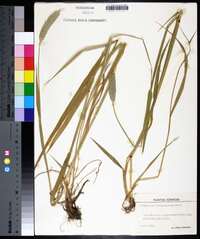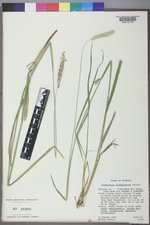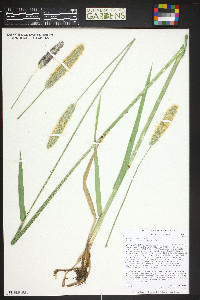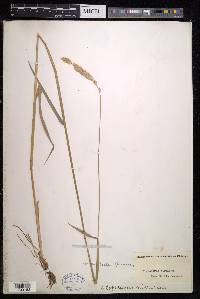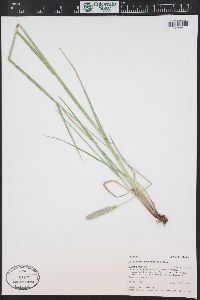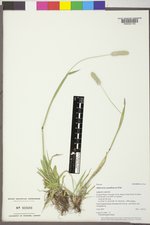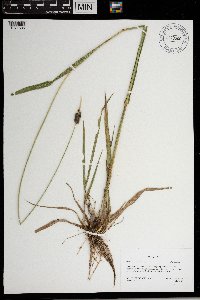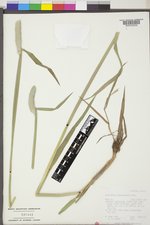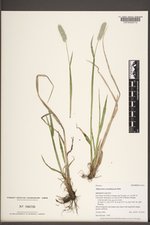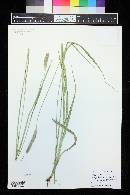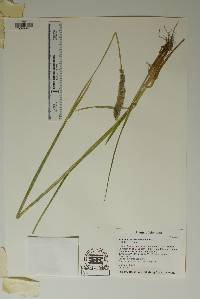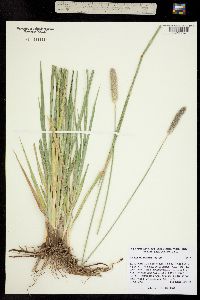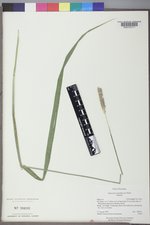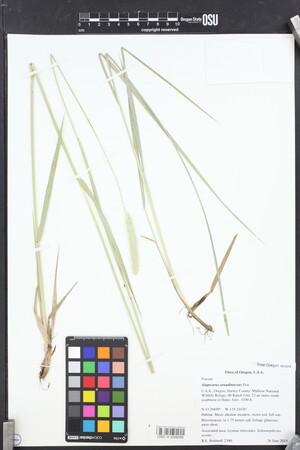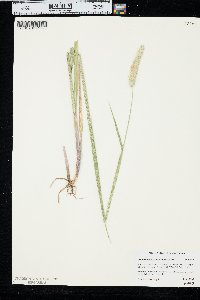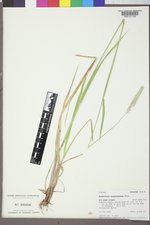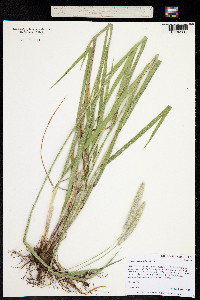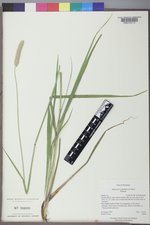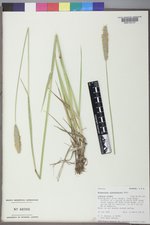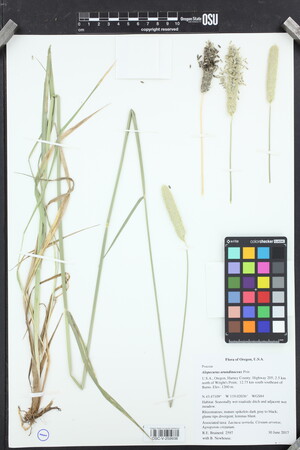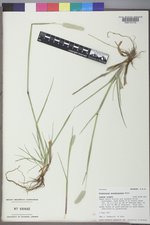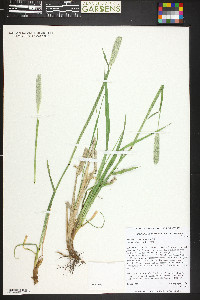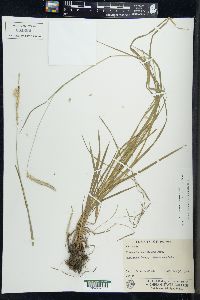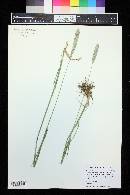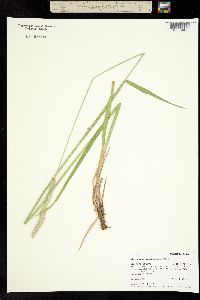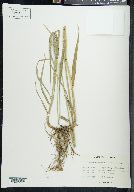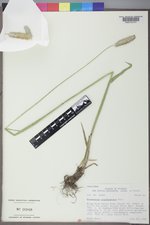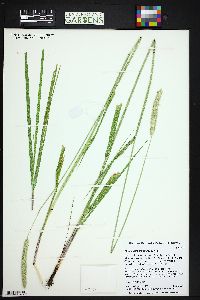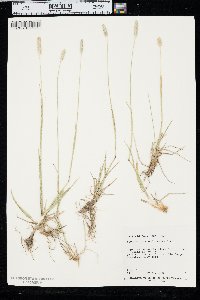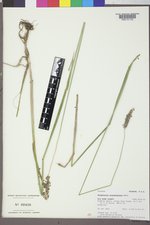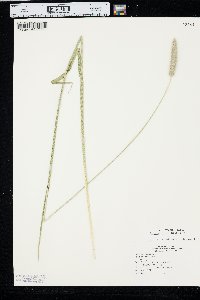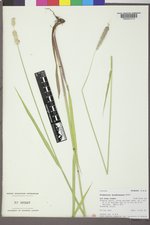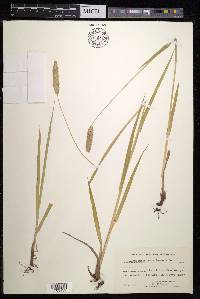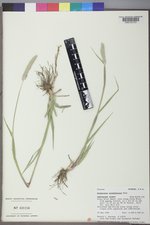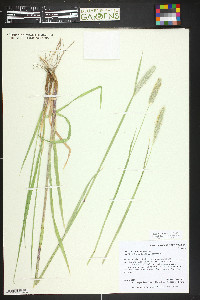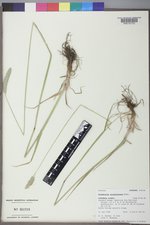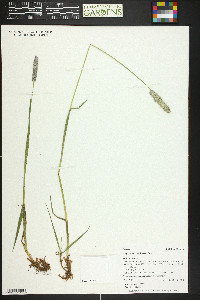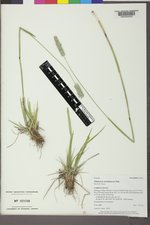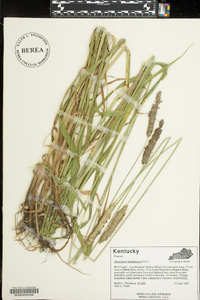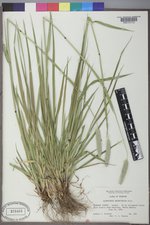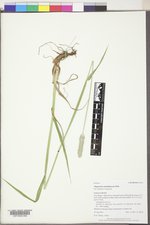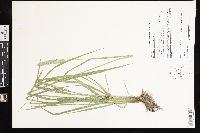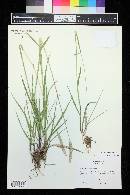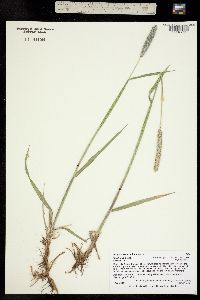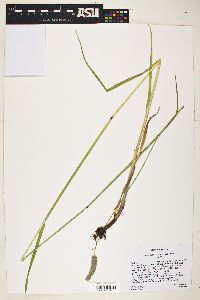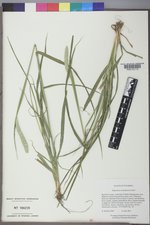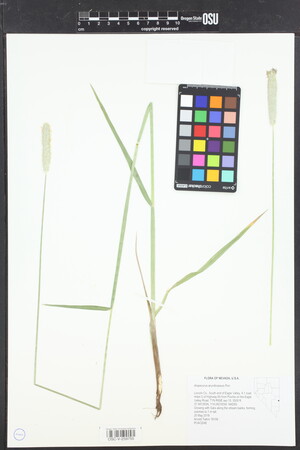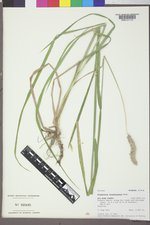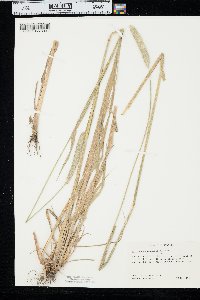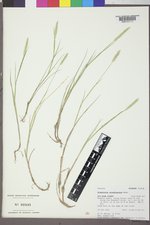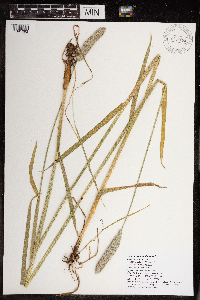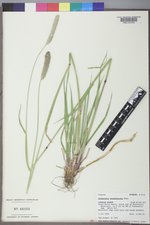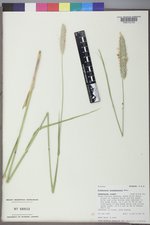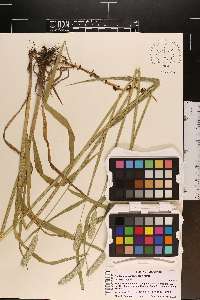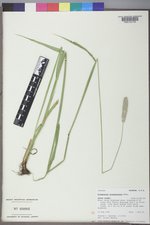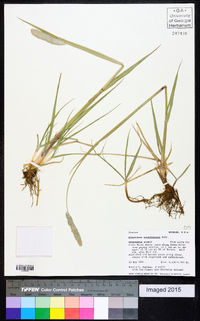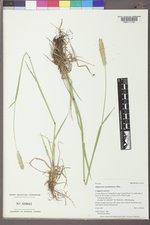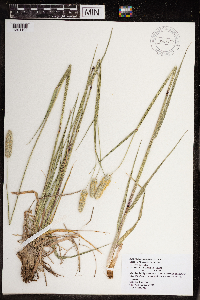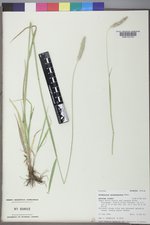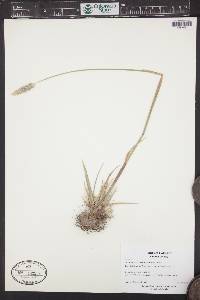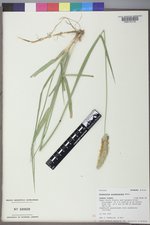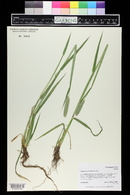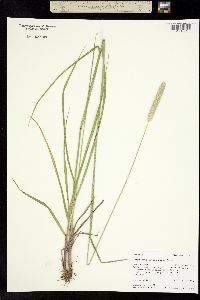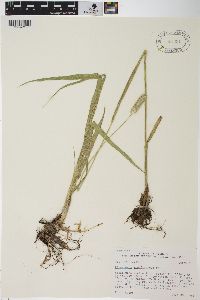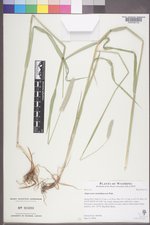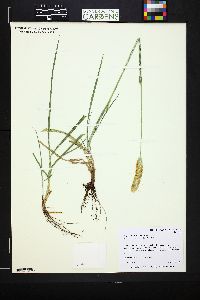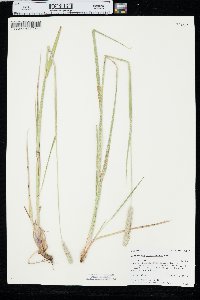
|
|
|
|
Family: Poaceae
Creeping Meadow-Foxtail, more...Creeping Meadow Foxtail, Vulpin Roseau
[Alopecurus armenus (K. Koch) Grossh., moreAlopecurus arundinaceus subsp. armenus (K. Koch) Tzvelev, Alopecurus brachystachyus M. Bieb., Alopecurus candicans Salzm. ex Steud., Alopecurus castellanus Boiss. & Reut., Alopecurus elatior Jacq. ex Hook. f., Alopecurus exaltatus Less., Alopecurus lasiostachyus Link, Alopecurus muticus Karav. & Kir., Alopecurus nigrescens Jacq., Alopecurus nigricans Hornem., Alopecurus nigricans var. humilis FRIES, Alopecurus nigricans var. ventricosus Rchb., Alopecurus pratensis subsp. arundinaceus (Poir.) Douin ex Bonn., Alopecurus pratensis subsp. ventricosus (Rchb.) Paunero, Alopecurus pratensis var. armenus K. Koch, Alopecurus pratensis var. arundinaceus (Poir.) Kuntze, Alopecurus pratensis var. exalatus (Less.) Griseb., Alopecurus pratensis var. nigricans (Hornem.) Wahlenb., Alopecurus pratensis var. ruthenicus Trin., Alopecurus pratensis var. ventricosus (Rchb.) Coss. & Durand, Alopecurus repens M. Bieb., Alopecurus ruthenicus Weinm., Alopecurus ruthenicus var. exserens Griseb., Alopecurus ruthenicus var. nigricans (Hornem.) Regel, Alopecurus salvatoris Losc. ex Willk., Alopecurus sibiricus hort. ex Roem. & Schult., Alopecurus ventricosus Pers., Alopecurus ventricosus var. exserens (Griseb.) Asch. & Graebn., Alopecurus ventricosus var. lobatus Grossh.] |
Plants short-lived perennials; rhizomatous. Culms 30-110 cm, erect. Ligules 1.3-5 mm, truncate; blades 6-40 cm long, 3-12 mm wide; upper sheaths somewhat inflated. Panicles 3-10 cm long, 7-13 mm wide. Glumes 3.6-5 mm, connate in the lower 1/3, membranous, sparsely pubescent, keels not winged, ciliate, apices acute, diverging, pale green to lead-gray; lemmas 3.1-4.5 mm, connate for at least 1/3 of their length, glabrous or sometimes with scattered hairs near the apices, apices truncate to obtuse, awns 1.5-7.5 mm, geniculate, exceeding the lemmas by 0-3 mm; anthers 2.2-3.5 mm. 2n = 26, 28, 30. Alopecurus arundinaceus is native to Eurasia, extending north of the Arctic Circle and south to the Mediterranean. It grows on wet, moderately acid to moderately alkaline soils, on flood plains, vernal ponds, and along rivers, streams, bogs, potholes, and sloughs. It was introduced for pasture in North Dakota and now occurs more widely, having been promoted as a forage species, and is sometimes used in seed mixtures for revegetation projects. It was evaluated for revegetation in Alberta, but there is no evidence that it was ever actually used in that province. Alopecurus arundinaceus was found to suppress Hordeum jubatum, a troublesome, unpalatable, weedy species, in irrigated pastures (Moyer and Boswall 2002). Dr. David Bogler, USDA NRCS PLANTS Database Perennials, Terrestrial, not aquatic, Rhizomes present, Rhizome elongate, creeping, stems dista nt, Stems nodes swollen or brittle, Stems erect or ascending, Stems geniculate, decumbent, or lax, sometimes rooting at nodes, Stems caespitose, tufted, or clustered, Stems terete, round in cross section, or polygonal, Stem internodes hollow, Stems with inflorescence less than 1 m tall, Stems with inflorescence 1-2 m tall, Stems, culms, or scapes exceeding basal leaves, Leaves mostly cauline, Leaves conspicuously 2-ranked, distichous, Leaves sheathing at base, Leaf sheath mostly open, or loose, Leaf sheath smooth, glabrous, Leaf sheath and blade differentiated, Leaf sheath enlarged, inflated or distended, Leaf blades linear, Leaf blades 2-10 mm wide, Leaf blades mostly flat, Leaf blades mostly glabrous, Leaf blades scabrous, roughened, or wrinkled, Ligule present, Ligule an unfringed eciliate membrane, Inflorescence terminal, Inflorescence a contracted panicle, narrowly paniculate, branches appressed or ascending, Inflorescence a dense slender spike-like panicle or raceme , branches contracted, Inflorescence solitary, with 1 spike, fascicle, glomerule, head, or cluster per stem or culm, Inflorescence spike linear or cylindric, several times longer than wide, Inflorescence single raceme, fascicle or spike, Flowers bisexual, Spikelets pedicellate, Spikelets laterally compressed, Spikelet less than 3 mm wide, Spikelets with 1 fertile floret, Spikelets solitary at rachis nodes, Spikelets all alike and fertille, Spikelets bisexual, Spikelets disarticulating below the glumes, Rachilla or pedicel glabrous, Glumes present, empty bracts, Glumes 2 clearly present, Glumes equal or subequal, Glumes equal to or longer than adjacent lemma, Glume margins connate at base, Glumes keeled or winged, Glume surface hairy, villous or pilose, Glumes 3 nerved, Lemmas thin, chartaceous, hyaline, cartilaginous, or membranous, Lemma margins connate below, Lemma 5-7 nerved, Lemma glabrous, Lemma body or surface hairy, Lemma apex truncate, rounded, or obtuse, Lemma muc ronate, very shortly beaked or awned, less than 1-2 mm, Lemma distinctly awned, more than 2-3 mm, Lemma with 1 awn, Lemma awn less than 1 cm long, Lemma awn 1-2 cm long, Lemma awn subapical or dorsal, Lemma awns straight or curved to base, Lemma awn once geniculate, bent once, Lemma margins thin, lying flat, Lemma straight, Stamens 3, Styles 1, Styles 2-fid, deeply 2-branched, Stigmas 2, Fruit - caryopsis, Caryopsis ellipsoid |

